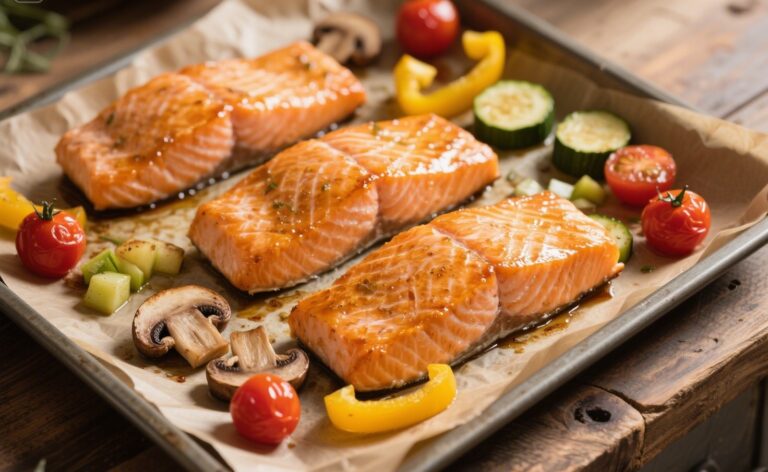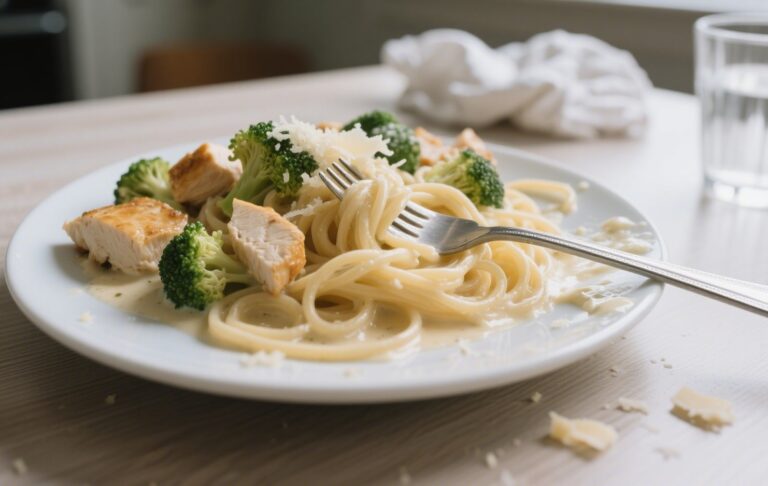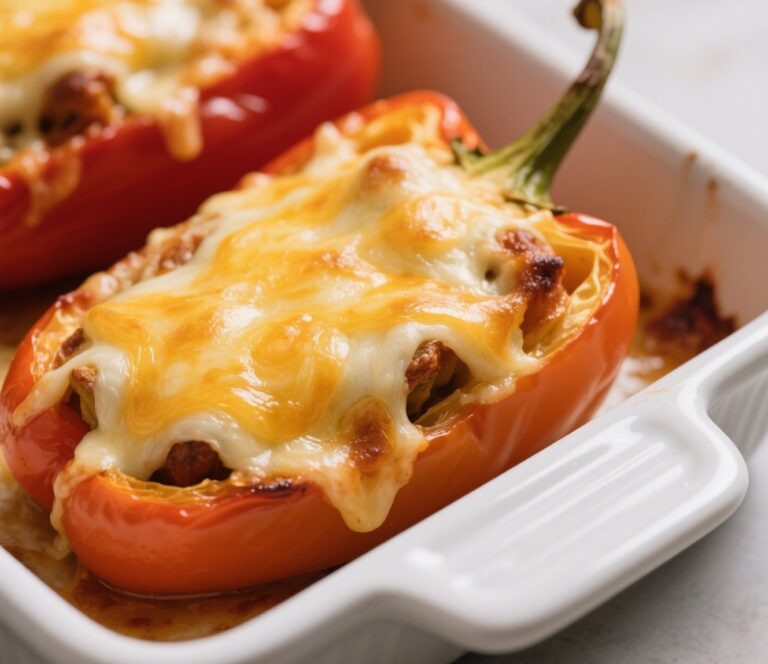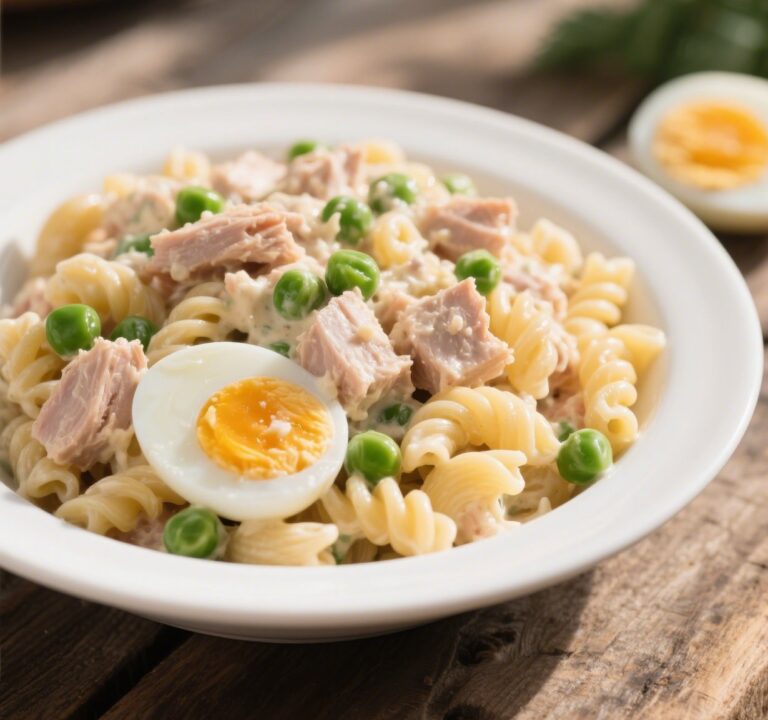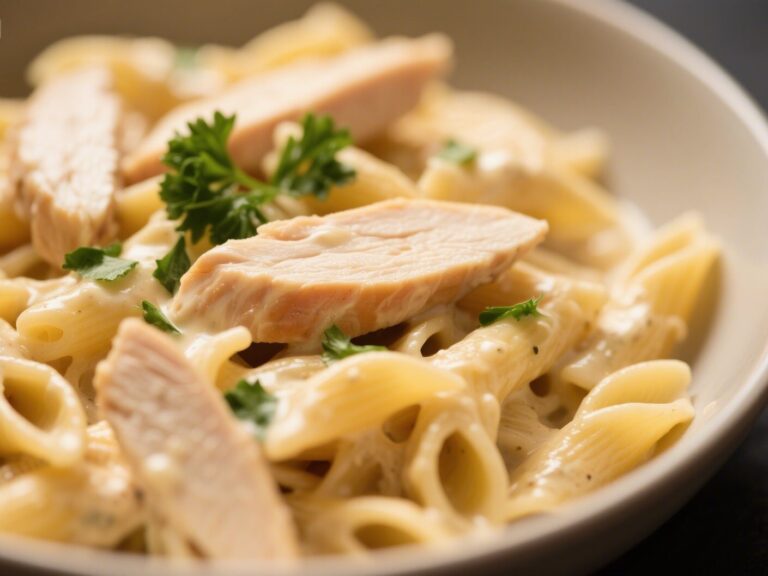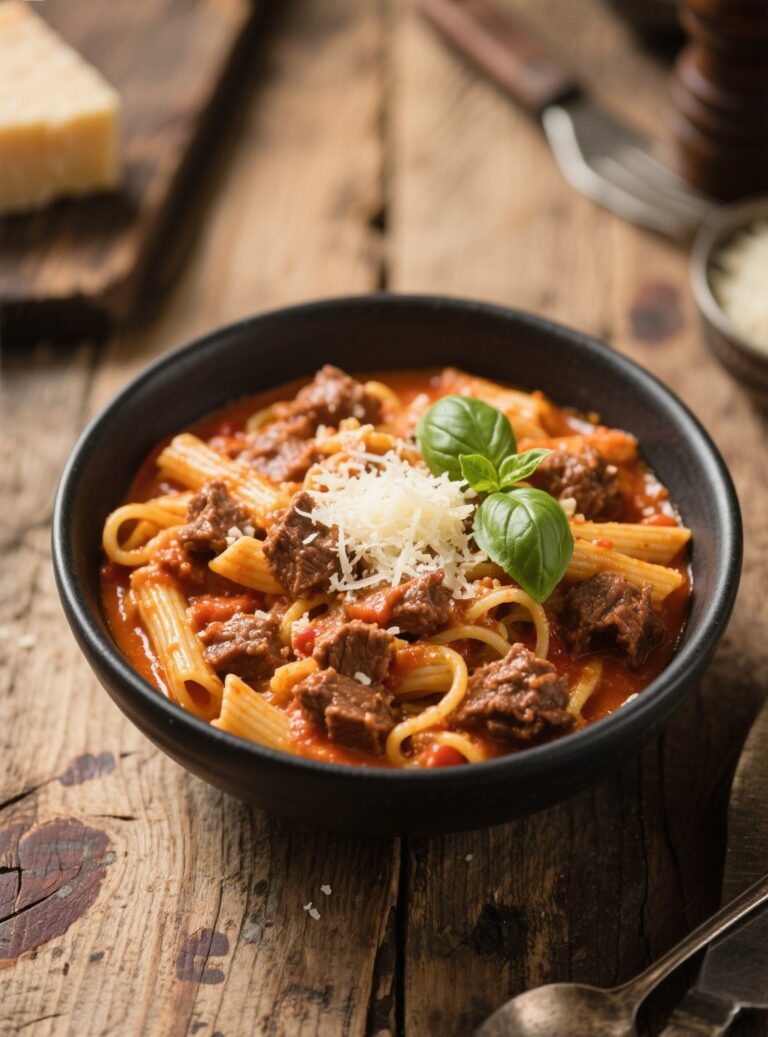Fried Rice: The Only 4 Steps You’ll Ever Need for Perfect Flavor
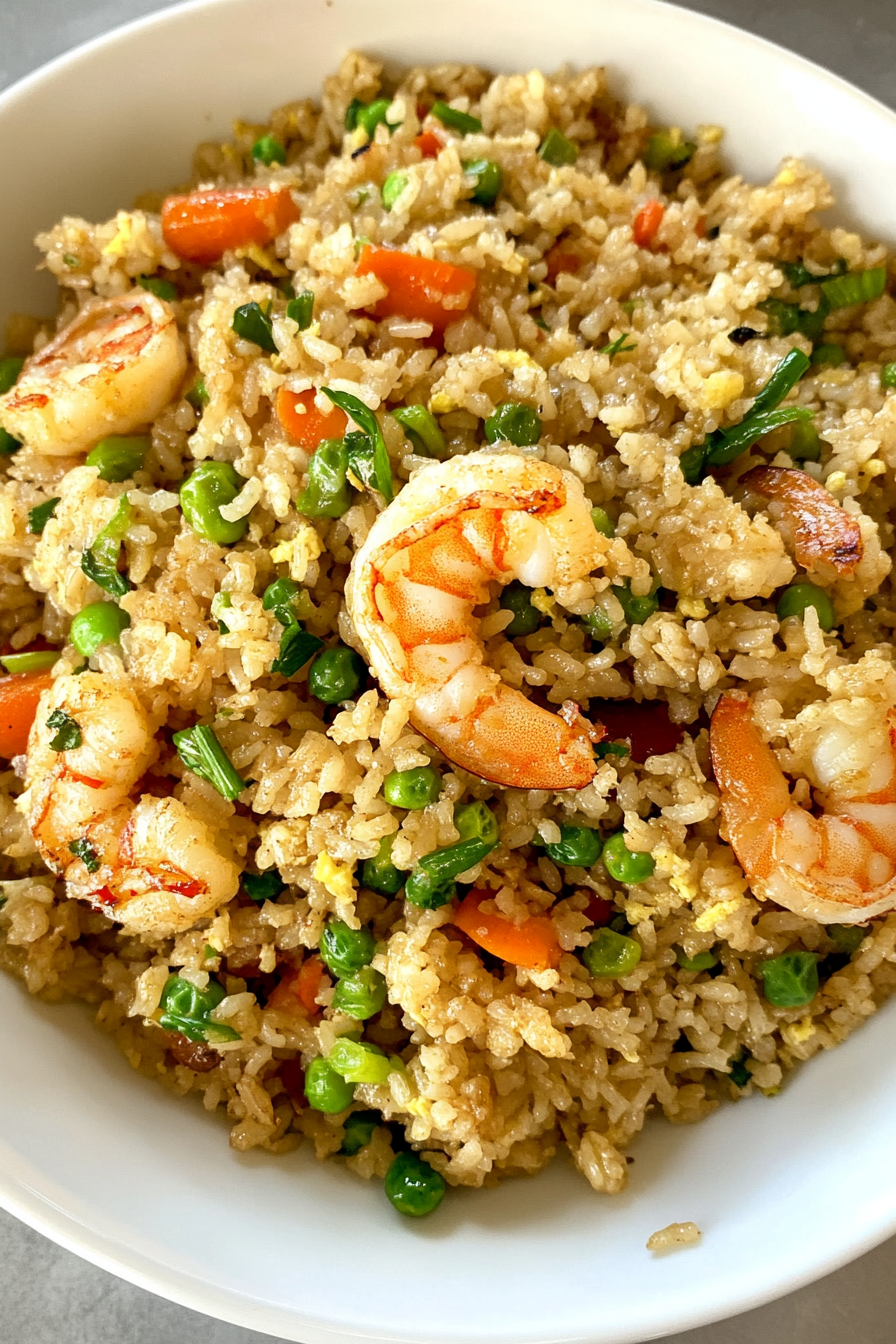
If there’s one dish that proves simplicity can still be delicious, it’s fried rice. Whether you’re using leftover rice or cooking up a fresh batch to satisfy a craving, fried rice is a quick, affordable, and deeply satisfying dish. This article breaks down everything you need to know about how to make fried rice—from choosing the right rice to mastering wok techniques. You’ll learn the secrets behind authentic flavor, discover global variations, and even get a full step-by-step recipe that delivers golden, savory rice every time.
Looking for inspiration? Try our Chicken and Vegetable Stir-Fry for another quick weeknight favorite.
What Is Fried Rice? A Flavorful Staple from East to West
– Understanding the Origins of Fried Rice
This dish has humble roots in ancient China, where home cooks used leftover grains and basic ingredients to create something savory and satisfying. Traditionally prepared in a wok over high heat, it’s been a cornerstone of East Asian cuisine for centuries.
Over time, it evolved beyond borders. Today, variations of this rice-based meal appear in homes and restaurants across the globe. From Thai pineapple twists to Japanese-style versions with fewer ingredients, its versatility is unmatched.
– Why It Became a Global Favorite
There’s a reason why this one-pan meal remains a staple. It’s quick, budget-friendly, and incredibly adaptable. You can use white or brown rice, add proteins like chicken or shrimp, and toss in any vegetables you have on hand. The result? A comforting dish that’s hard to mess up.
Its rise in global popularity also stems from its flexibility. Whether served at a street vendor in Bangkok or delivered from a local Chinese takeout spot, it satisfies both hunger and taste buds with minimal effort.
Discover great ideas like our Stuffed Bell Peppers that offer similar versatility in the kitchen.
Key Ingredients That Make the Perfect Fried Rice
– Rice Matters: Best Type of Rice for Fried Rice Recipes
The foundation of any great fried rice dish is, of course, the rice itself. While it might be tempting to use freshly steamed rice, that’s actually one of the biggest mistakes. Why? Because freshly cooked rice holds too much moisture, which causes clumping and sogginess when stir-fried.
Instead, use cold, day-old rice that’s been refrigerated. It’s firmer, drier, and ideal for achieving that signature separated grain texture. Medium-grain or long-grain rice varieties like jasmine or basmati are top choices—they strike the perfect balance between stickiness and fluffiness. If you prefer a nuttier flavor, opt for brown rice, which also adds a bit of chewiness.

Don’t miss our Creamy Chicken Alfredo Pasta if you’re looking for more satisfying comfort meals made with pantry staples.
| Type of Rice | Texture Result | Recommended? |
|---|---|---|
| Freshly Cooked | Too moist, clumpy | ❌ |
| Day-Old White Rice | Firm, separate grains | ✅ |
| Brown Rice | Nutty, chewy | ✅ |
| Sticky Rice | Too glutinous | ❌ |
– Proteins, Veggies & Oils: What to Include and Why
Fried rice is the ultimate leftover-friendly meal. Almost any combination of ingredients will work, but some additions are considered essential.
- Garlic & Scallions: These aromatics are the first layer of flavor. Mince the garlic and separate the white and green parts of the scallions to add complexity throughout the cooking process.
- Frozen Peas & Carrots: These vegetables are classic for a reason. They’re colorful, sweet, and provide a pleasant contrast in texture.
- Eggs: A simple scrambled egg, cooked directly in the pan, adds richness and protein.
- Soy Sauce: This gives the rice its salty, umami backbone. You can use tamari for a gluten-free version.
- Sesame Oil: Just a touch at the end adds a toasted, nutty aroma that elevates the entire dish.
Vegetable oil is used to stir-fry because it can withstand high heat without burning. It’s neutral in flavor, which lets the other ingredients shine.
Looking for inspiration? Try our One Pot Creamy Tomato Beef Pasta—another quick dish built around simple staples.
When it comes to building your own version, the key is balance. You want a mix of soft and crunchy, salty and savory, with each bite delivering a hint of something different.
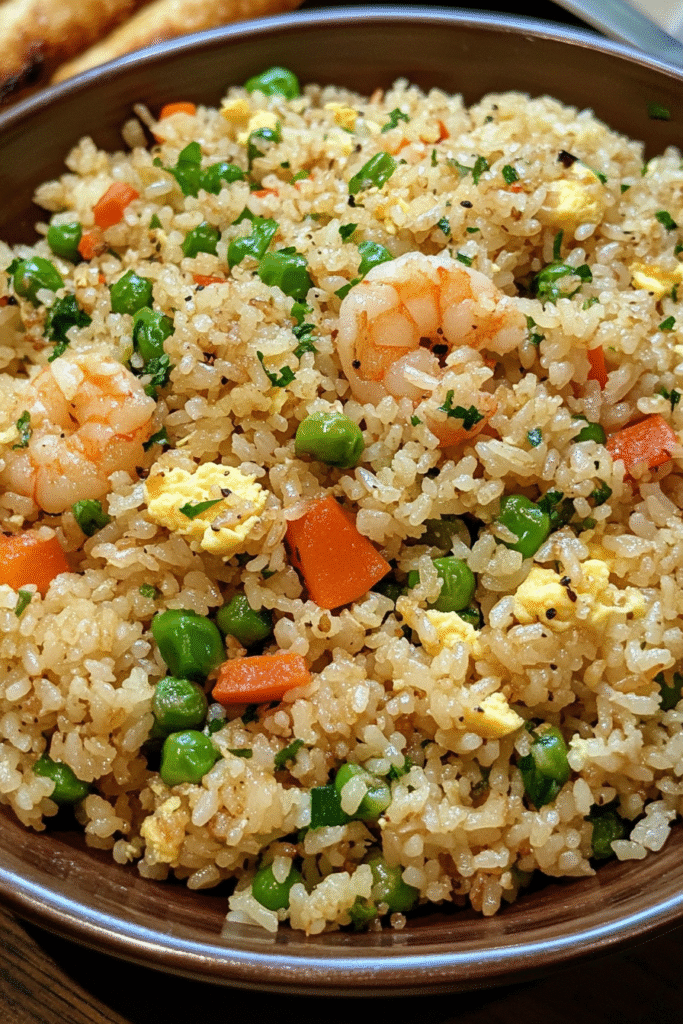
The Secret Techniques Behind Authentic Fried Rice
– Why Cold Rice Is Non-Negotiable
If there’s one tip that separates average home cooks from takeout-level mastery, it’s this: always use cold, leftover rice. Freshly steamed rice tends to be too moist and clumpy, which results in a gummy texture when stir-fried. The dry, firm texture of refrigerated rice allows each grain to fry up beautifully without sticking or turning mushy.
Day-old rice also absorbs sauces better, giving your fried rice that deep, savory flavor in every bite. When prepping rice for the next day, spread it out on a tray or plate and refrigerate it uncovered if possible. This helps dry it out further and makes it perfect for frying.
Need more quick-cook tips? Don’t miss our Veggie Wrap with Hummus—a no-fuss, flavorful option when you want a break from stir-fry.
– Mastering Stir-Fry Timing & Heat for Texture and Flavor
Stir-frying might look effortless, but it’s all about timing and high heat. A common mistake is overcrowding the pan. Too many ingredients at once will steam instead of fry them. Always use a large wok or nonstick skillet, and cook over medium-high to high heat.
Start with oil and aromatics like garlic and scallions, letting them sizzle just long enough to infuse flavor. Then, add your vegetables, followed by rice, and finally, seasoning. Use a quick tossing motion to coat everything evenly, working fast so nothing burns.
When it’s time to add the eggs, push the mixture to one side and scramble the eggs on the empty side of the pan. Once they’re fluffy and just set, fold them into the rice mixture.
Here’s a quick timing breakdown:
| Step | Approx. Time | Pro Tip |
|---|---|---|
| Heat oil & aromatics | 30 sec – 1 min | Don’t let garlic brown |
| Add veggies | 2 min | Use thawed or frozen, not fresh |
| Stir in rice & seasoning | 2–3 min | Break up clumps before cooking |
| Add eggs & scramble | 1–2 min | Cook eggs until just set |
Looking for more healthy stir-fry ideas? Check out our Chickpea Spinach Curry for a meat-free, protein-packed twist.
By the end of this quick cook process, the rice should be golden, the veggies vibrant, and the aroma irresistible.
Step-by-Step Guide
– Ingredient Prep: Garlic, Scallions, Eggs, and More
Before you start cooking, proper prep is everything. Fried rice comes together fast—so having every ingredient ready and within reach ensures the process stays smooth and the results stay flavorful.
Here’s your prep checklist:
| Ingredient | Prep Instructions |
|---|---|
| Garlic (3 cloves) | Mince finely for quick flavor release |
| Scallions (2 medium) | Slice diagonally, separating whites and greens |
| Eggs (2 large) | Crack into a small bowl, ready to scramble |
| Frozen peas & carrots (1 cup) | No need to thaw beforehand |
| Cooked rice (4 cups) | Use cold, medium-grain rice (day-old is best) |
| Soy sauce (1 tbsp) | Or tamari for a gluten-free option |
| Kosher salt (1½ tsp) | Adjust to taste during final seasoning |
| Ground white pepper (¾ tsp) | Adds subtle heat without overpowering |
| Vegetable oil (2 tbsp + 1 tsp) | Neutral oil for high-heat stir-frying |
| Toasted sesame oil (¾ tsp) | Finish with this for deep, nutty flavor |
Looking for quick protein-packed breakfast ideas? Try our Gluten-Free Breakfast Quiche perfect for meal prep like this rice dish.
– Cooking Method: From Wok to Plate in Minutes
Let’s break it down. This dish moves fast—under 10 minutes from start to finish once you heat your pan.
Step 1: Heat the Oil & Aromatics
Add 2 tablespoons of vegetable oil to a large wok or nonstick pan over medium-high heat. Once shimmering, toss in the garlic, scallion whites, and frozen peas and carrots. Stir-fry for about 2 minutes until the vegetables are heated through.
Step 2: Add the Rice & Seasonings
Add your cold rice, breaking up any clumps with your hands or a spatula. Toss everything to combine. Stir in the soy sauce, kosher salt, and white pepper. Continue stir-frying for 2–3 minutes, letting the rice absorb the seasoning and begin to crisp slightly.
Step 3: Scramble the Eggs
Push the rice mixture to one side of the pan. Add 1 teaspoon of oil to the empty side and pour in the eggs. Scramble them quickly with a spatula, cooking until they form fluffy curds. Then stir the eggs into the rice.
Step 4: Finish with Sesame Oil and Greens
Turn off the heat. Drizzle the sesame oil over the rice and toss well. Garnish with the reserved scallion greens and serve hot.
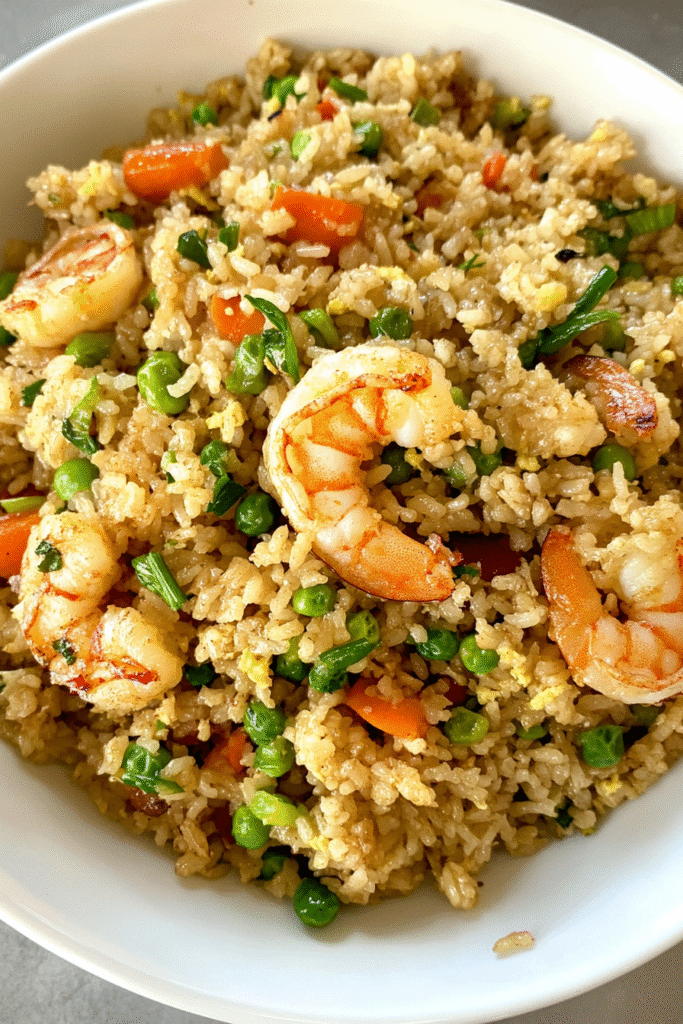
Check out our Recipes Section for more go-to weeknight dinners that come together in under 30 minutes.
Nutritional Snapshot (per serving):
| Nutrient | Amount | Daily Value |
|---|---|---|
| Calories | 865 | – |
| Total Fat | 12.8g | 19.7% |
| Saturated | 1.8g | 8.9% |
| Carbs | 164.1g | 54.7% |
| Fiber | 2.8g | 11.0% |
| Sugar | 3.4g | – |
| Protein | 18.7g | 37.4% |
| Sodium | 714.4mg | 29.8% |
This easy method guarantees restaurant-quality flavor without needing a professional kitchen. The balance of textures—crisp vegetables, fluffy egg, and lightly charred rice—makes every bite delicious.
Exploring Fried Rice Variations Around the World
– Chinese, Thai, Japanese & Korean Fried Rice Styles
Fried rice may have started in China, but nearly every country in Asia has made it their own. Let’s look at some standout variations from around the world:
Chinese-Style (Chao Fan)
The most well-known version in the West, Chinese-style typically features eggs, scallions, peas, carrots, and a light dash of soy sauce. You’ll often find variations with shrimp, pork, or chicken. A wok and high heat give it that signature smoky note called “wok hei.”
Thai Fried Rice (Khao Pad)
Made with jasmine rice, Thai fried rice uses fish sauce instead of soy sauce, giving it a more pungent, savory twist. It’s often topped with slices of cucumber and lime wedges, and sometimes includes pineapple or chili for a sweet-spicy finish.
Japanese Fried Rice (Yakimeshi)
Often cooked on teppan grills, this style uses short-grain rice and less oil. It’s simpler—often just garlic, onions, egg, and a protein like chicken or beef. Sometimes it’s seasoned with soy sauce and mirin for mild sweetness.
Korean Fried Rice (Bokkeumbap)
Korean versions frequently feature kimchi, which lends a bold, tangy heat. Topped with a fried egg and sometimes seaweed flakes or sesame seeds, it’s a spicy, umami-rich comfort food.
– Vegetarian, Vegan, and High-Protein Fried Rice Options
Fried rice is one of the most adaptable meals around. Whether you’re plant-based or watching your protein intake, there’s a version that fits your diet.
Vegetarian/Vegan Options
Swap out the egg for tofu or tempeh, and use tamari or coconut aminos in place of soy sauce. Add edamame, mushrooms, and bell peppers for flavor and texture. Toasted sesame oil adds richness without needing animal products.
High-Protein Versions
Add cooked chicken breast, shrimp, or lean beef. Eggs already boost protein, but you can take it further with a scoop of shelled edamame or chickpeas. Even quinoa can substitute rice for added fiber and protein.
Low-Carb Alternatives
Cauliflower rice is a great substitute for traditional grains. Stir-fry it the same way—just for a shorter time to avoid sogginess.
Looking for more healthy, globally inspired dishes? Check out our Moroccan Chicken Tagine for a flavorful North African twist.
| Style | Key Features | Base Ingredient |
|---|---|---|
| Chinese | Soy sauce, scallions, wok hei | Medium-grain rice |
| Thai | Fish sauce, lime, jasmine rice | Jasmine rice |
| Japanese | Garlic, short-grain, light seasoning | Short-grain rice |
| Korean | Kimchi, fried egg, spicy notes | White rice |
| Vegan | No egg/meat, plant oils, tofu | Brown rice |
| High-Protein | Chicken, shrimp, edamame, eggs | White rice |
These international takes show just how diverse this simple dish can be. Whether spicy, savory, or subtly sweet, there’s a fried rice style for every palate.
Troubleshooting Fried Rice: Common Mistakes to Avoid
– Why Your Rice Turns Mushy or Sticks to the Pan
If you’ve ever ended up with soggy, sticky, or overly soft rice in your stir-fry, you’re not alone. It’s one of the most common problems people face when trying to make fried rice at home.
Here’s what usually goes wrong:
- Using Freshly Cooked Rice
Fresh rice contains too much steam and moisture. Even if it looks fluffy, it’ll clump up the second it hits the pan. The solution? Always use cold, day-old rice stored in the refrigerator. - Skipping the Oil or Using the Wrong Pan
Not enough oil means your ingredients won’t glide easily across the pan, leading to sticking and tearing. Use a nonstick skillet or wok, and make sure it’s hot before you add anything. - Overloading the Pan
Too many ingredients can cool down the pan and create steam instead of a sear. Work in batches if needed, especially if you’re cooking for a crowd.
Looking for more reliable, simple recipes? Try our Easy Creamy Garlic Chicken Pasta—packed with flavor and easy to execute.
– Over-salting, Under-seasoning, and Texture Fixes
Getting the seasoning right is a balancing act. Here’s how to make sure every bite hits the mark:
Too Salty?
If you accidentally overdo it with soy sauce or salt, mix in a small portion of unsalted cooked rice to dilute the flavor. A squeeze of lime juice can also help brighten and rebalance the dish.
Bland Rice?
Under-seasoned rice is usually the result of skipping aromatics or using low-sodium soy sauce without adjusting. Make sure to include garlic, scallions, and a pinch of white pepper. Finish with toasted sesame oil for extra depth.
Eggs Too Dry or Rubbery?
Cook eggs quickly on high heat until just set, then fold them into the rice. Overcooking eggs before mixing will lead to dry, rubbery textures that clash with the rest of the dish.
Rice Too Dry or Stiff?
Sprinkle a tiny amount of water or broth while stir-frying to help the grains rehydrate slightly—just don’t overdo it, or you’ll reverse the crispy texture.
| Problem | Cause | Fix |
|---|---|---|
| Mushy rice | Using fresh rice | Use day-old, cold rice |
| Rice sticks to pan | Not enough oil, pan not hot enough | Preheat pan + use oil properly |
| Too salty | Too much soy sauce | Add plain rice, use lime |
| Bland taste | Skipped aromatics/seasoning | Add garlic, scallions, sesame oil |
| Overcooked eggs | Scrambled too long | Cook just until fluffy |
Mastering these small but crucial details ensures your homemade fried rice turns out just as good—if not better—than takeout.
FAQs
How to make fried rice step by step?
Start by sautéing garlic, scallion whites, and frozen peas and carrots in oil. Add cold, day-old rice and stir in soy sauce, salt, and white pepper. Push rice aside, scramble eggs in the same pan, then mix everything together. Finish with sesame oil and scallion greens.
What is the secret to a good fried rice?
Use cold rice, high heat, and layer your flavors. Cook ingredients separately, avoid overcrowding the pan, and season with soy sauce, white pepper, and sesame oil for the best texture and taste.
What gives Chinese fried rice its taste?
The distinct taste comes from soy sauce, toasted sesame oil, garlic, and white pepper—plus the high-heat stir-frying method that adds a signature smoky aroma.
How to make special fried rice?
Special fried rice includes extra proteins like shrimp or chicken and additional veggies. Cook each ingredient properly, then combine with rice and seasonings for a flavorful upgrade.
Fried Rice—Simple, Flavorful, and Customizable
Fried rice is more than just a way to use up leftovers—it’s a versatile, delicious meal that you can master with a few simple tips. From choosing the right rice to stir-frying with high heat and layering bold seasonings, each step builds flavor and texture. Whether you’re making a classic version or customizing it with proteins and veggies, fried rice can easily become your go-to dish.
Don’t miss our Quick Vegetarian Black Bean Enchiladas if you’re craving more quick and hearty meal ideas. Or check out Overnight Oats – Easy Make Ahead Breakfast for a simple breakfast solution.

